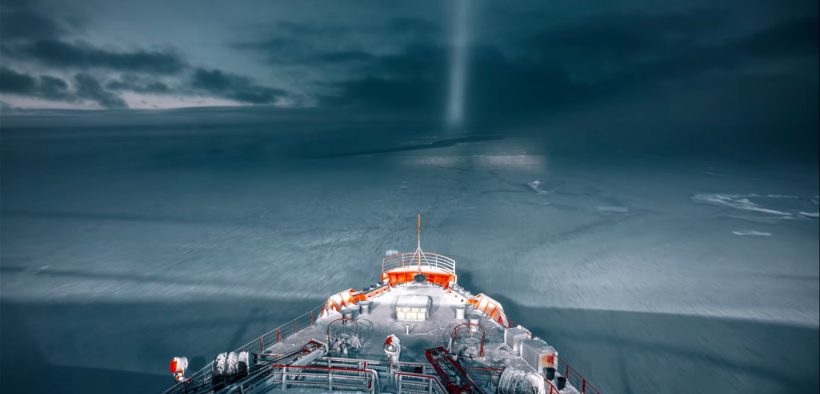Arctic Tragedy is Strategic Geopolitical Opportunity

Global warming in the Arctic means environmental disaster but also economic opportunity and a geopolitical power struggle.
The melting of the polar ice caps has rightfully alarmed the global population. However, the world’s largest economies and militaries see a strategic value in seizing the Earth’s transforming terra firma.
It is currently predicted that by 2030 Arctic waters will have a record minimal amount of ice. The loss of ice creates a unique opportunity for those looking to seize upon tragedy. Believed to have 30 percent of the world’s oil and natural gas, the Arctic circle and surrounding, emerging waters will be a place of global contention in the coming decade.
Currently, the U.S., Russia, and Canada are trying to stake out zones of influence in the Arctic circle as all three countries have sovereign territory that touches upon the Arctic. The Russians and their North American counterparts are currently engaged in disputed territorial claims, which will eventually lead to mounting tensions as access to Arctic resources becomes easier as Arctic ice melts away.
Joining the tug of war between the global superpowers is China which has an interest in the Arctic also circle because of the natural resources, fish and tourism that can be generated in the area. Furthermore, anything China touches historically destroys ecosystems and environments. China has already destroyed its own atmosphere in favor or manufacturing profits.
At present Russia is investing in a military fleet to be used specifically in the Arctic terrain. The U.S. is also focused on military training close to the region and simulating the weather conditions to prepare the military.
Russian Icebreakers
Russia has four nuclear-powered icebreakers, Yamal being one of the largest. The video below depicts the enormous power of the gigantic icebreaker.
They also have four diesel-powered icebreakers and a target of 2026 to debut a new generation of icebreakers under project 22220. Overall Russia has 46 ships with icebreaking capabilities of various strengths.
The “Ural”, the world’s largest nuclear-powered icebreaker, was launched from the dock at the Baltic Shipyard in St. Petersburg in May 2019 and sailed straight north to break the ice for the LNG tankers before their transfer o the Rosatomflot company in 2022.
Furthermore, to maintain a year-round operation in the Arctic, Rosatomflot is forecasting the use of 13 icebreakers (9 nuclear and 4 powered on natural gas).
The Rosatom State Atomic Energy Corporation estimates project costs to be at half a trillion Russian roubles. It is unlikely the Russian government will be injecting such capital, so the project will have a blended investment of private and government capitals. In Russia it would be likely the capital would come from Russian government favored oligarchs in order to quadruple their future wealth.
Russia also has Project 10510 – which consists of the 120 megawatts Leader that is able to cut through 13.1 feet of ice at a width of 164 feet. The cost of the project is estimated to be close to 100 billion Rubles ($1.6 billion). There is speculation Leader can also be equipped with rocket containers and radio technical and diving equipment.
Besides civilian icebreakers, Russia has diesel-powered icebreakers used in patrols and also has a helicopter pad. Under Russia’s project 23550, the icebreakers will be equipped with Club-K rockets. The link below provides a video of the rocket system.
United States’ Icebreakers
The United States has 2 functioning ice breakers – Healy being used for scientific research and the Polar Star.
The U.S. identified the need to have additional ice breakers to compete on the global scale and also to be able to have adequate offensive and defensive technologies to withstand Russian interests in the Arctic. One such icebreaker will begin to be built this year and should be completed and in service by 2023. The cost of each will be close to $1 billion.
Chinese Icebreakers
China is planning to create its own icebreaker. Since China has atomic reactors, which are utilized on submarines, this would be a step forward. Nevertheless, it is not expected for China to be successful in the endeavor anytime within the next 10 years, but the capabilities are there for the future.
The crucial question is whether Russia will allow China to enter Russian waters. It is highly unlikely that Russia would share their ice breaker technology with China or even sell any of their ice breakers.
Only the future will tell how the Arctic power play and divisions shape out especially given the current heightened tension between China and the U.S. Russia is still under U.S. sanctions. Will humanity step forward to prevent the full destruction of the Arctic habitat for profit?







